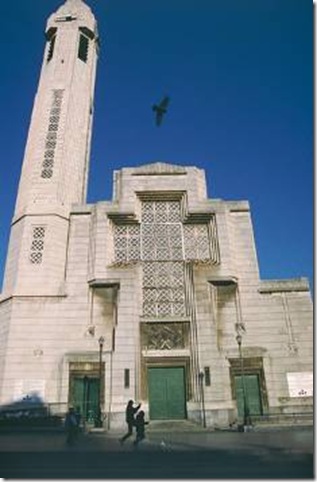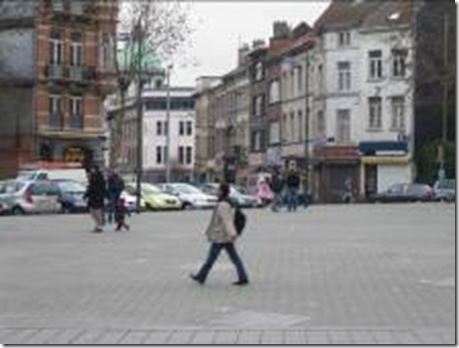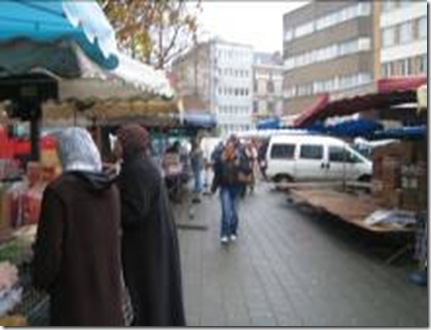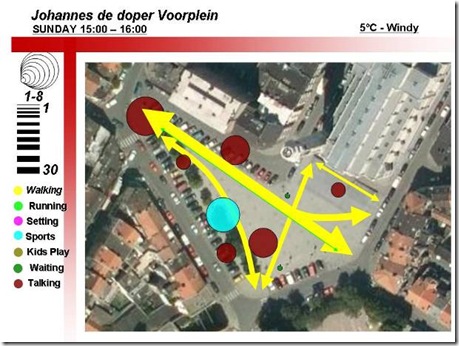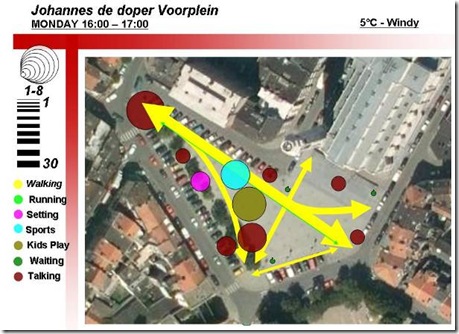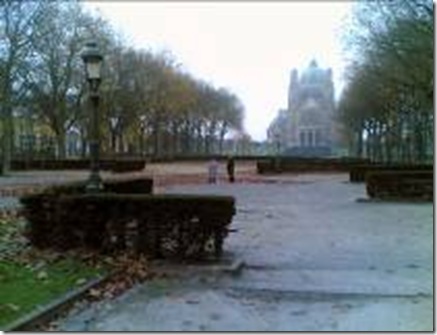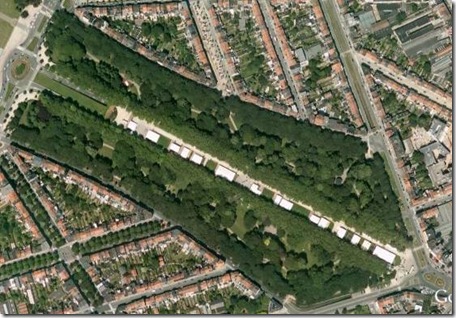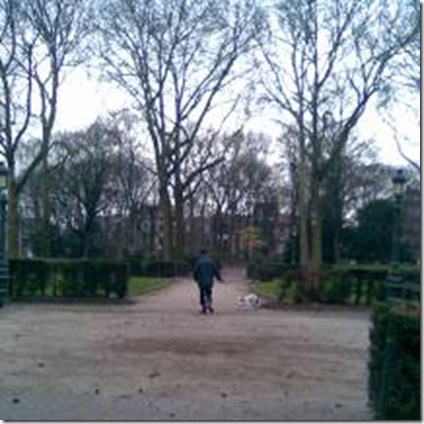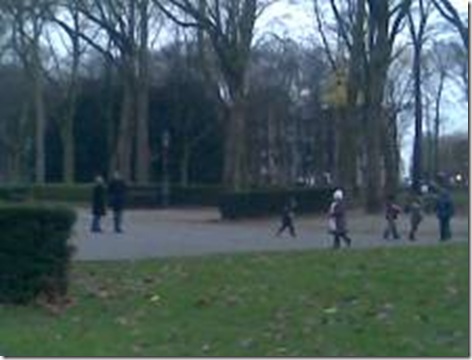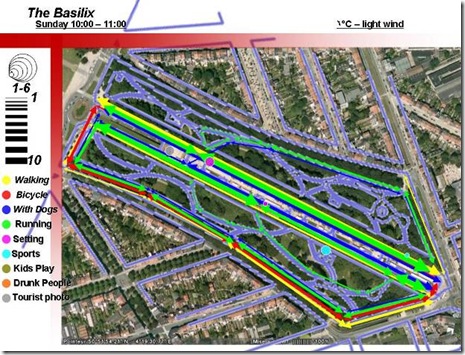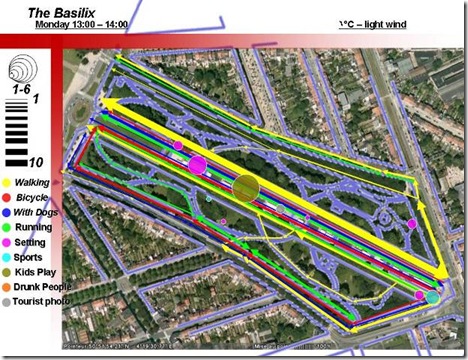Public Space
Johannes de Dooper Voorplein & Parc Elisabeth
Under Supervision of:
Dr. Maarten Loopmans
Presented By:
Adham HABIB Hebat-Allah GAMAL
SHAFIQ BARA Sophie DEMEERE
CONTENTS
INTRODUCTION
1. The Studying Method
2. Johannes de Dooper Voorplein
2.1. Square Description
2.2. Users & Activities
2.3. Problems
3. Parc Elisabeth
3.1 Park Description
3.2 Users & Activities
3.3 Problems
4. Comparison between the two public spaces
5. Conclusion
INTRODUCTION
What is Public Space?
It’s an area or place that is open and accessible to all citizens, regardless of gender, race, ethnicity, age or economic level. In the Public Space, you don’t pay fees or tickets for entry. The term 'Public Space' is also often misconstrued to mean other things such as 'gathering place'.
Where do we find Public Spaces?
They are streets, pavements, squares or parks. Government buildings, such as public libraries and many other similar buildings are also public space.
Some parks, libraries, government buildings, etc, are closed at night. As this does not exclude any specific group, it is generally not considered a restriction on public use. Entry to public parks can be restricted based upon a user's residence. (1)
Why do we study Public Spaces?
We study the public spaces to know different information such as:
1. Who are using these spaces?
2. Why are people using the spaces?
3. When are people using these spaces?
4. What are the usages of these spaces?
5. Do people like them or not?
And after we find the answers for those questions, we made some recommendations and suggestions for the authorities responsible for these spaces to enhance the unlikely things in those spaces. For future designs, urban planners should take into their consideration what people like and what they don’t like in Public spaces.
1. The studying Method
To study & analyze the two places we used the observation method, through different moments of the day (in the morning, the afternoon, during the regular day, and holidays) and different weather conditions (rainy, sunny, cloudy, cloudy and windy). In the first step we tried to observe, through photos and visual observation, the different users and activities, which take place on the space, . We tried to draw a plan that explains: the use pattern of the park, the different activities, the number of users in a certain time and the direction. After this, we tried to list the problems that affect the park. Through a series of Interviews with different users of the park from different backgrounds, who also suggested some solutions and changes in the park that could enhance their experience.
Observing all the activities which take place on the square seems not that easy. During the observations, we realized that it would be easier to take samples of activities, which were going on on different places on the square, to get a more accurate view on the different activities. Secondly, we remark it was not easy to register the paths over the square or in the park, because many people are simultaneous passing over the square or in the park. We discovered that taking different pictures in a well defined time span simplified the registration and augmented the accuracy. By taking pictures we don’t the analyze whole passing population, but takes out a sample. We structured this information on maps by using some icons and symbols. Those icons and symbols visualize the flows and are understandable for everyone.
Our observations take place during the winter months, what could have a seasonal influence on our outcome. The weather conditions for example snow, rain or very cold may influence the generalising of our observations. Because based on the interviews the Elisabeth square seems to be very lively in the summer (Pick-nicking people, organised activities, playing football,…). The interviewees of the Johannes De Dooper voorplein even so organise some activities in the summer times and neighbourhood children transforms the square into a big playground, with a lots of attractions. So both squares seem to be livelier in the summer as in the winter.
2. Johannes de Dooper Voorplein
Square Description
|
The “Johannes de Dooper Voorplein” is a neighborhood square in Old-Molenbeek. The square consists of a church (which is most of the times closed), markets for household/vegetables/fruit, couple cafés and a school. The square has been constructed as a big concrete square with parking spots, benches, rubbish bins, pin-pricks of light and a lot of trees. After the restructuring of the local public place in the nineteen the filling-in of the square evolve from a dirty square where illegal dumps of waste and double-parking were more the rules then the exception to an adapted square, to a local square where social interaction became more important and which was adapted to the needs of the local residents. The square revived by the multiple economic and social use of it by different groups for several activities, which could be hold simultaneous. This resulted in a higher economical and social interaction. Based on the fact that the place is not marked with some icons or identifying marks, nobody can claim the place.
Users & Activities
|
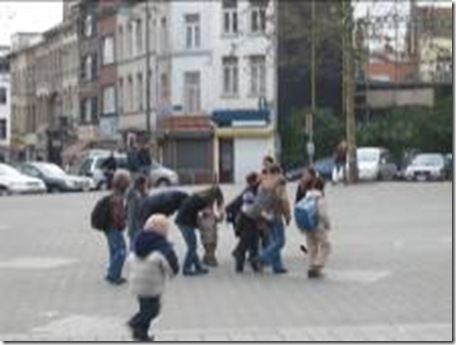
|
|
|
Secondly, we observed that most of the times the men were hanging around, playing or talking on the place. This could be explained by the not European origin and their culture. Bordieu describes this as the habits of the social-culturally determined disposition, which makes clear that women don’t use the place for hanging around but for shopping or as passing through. Although, some women take a chat with each other after the end of the primary school or during the Thursdays market.
On the square we find a lot of fresh vegetables markets and a nearby metro station, which enlarges the number of persons that pass the square and augmented the change of meeting each other. The place is a meeting point during the peak hours and makes that you bump into someone. The square is a public square with a familial sphere and creates a community feeling. The shops are frequently used by the habitants of the neighborhood, which delivers recognition. The economical function takes care of the social interaction.
On a crowded square you can follow the chats of others, which delivers the opportunity to observe the public, familial and private sphere. We find the same observations back in the research of Soenen (2006). The difference with the research of Soenen is that you have the change to stand far enough from each other to execute your activities, so that the interaction of other people can be limited. We observed also some typical public space activities such as, avoiding, aid, ephemeral social contact, impression and negative relation.
Analyzing the two cafés, gives us an insight in the fact that those places are semi-public places that are almost only used by not-European men. Not everyone can free enter the cafés, so we saw not one woman entering the cafés. This could be explained by the fact that cafés are culturally only accessible for men. So we remark that the cultural boarders for the accessibility play an important role.
The square image will be different based on the fact of identifying yourself with the place. The media gives a stigma to the community and describes it as dangerous territory with lots of (light version of) ghettos. This media image will by most people automatically be translated in a personal negative connotation of the habitants.
Some immigrants like, a women that has move from Sint-Gillis to Old-Molenbeek, distanced herself from the place based on the depressive feeling she got of the place. She’s not identifying herself with this place. Others identify them with the square, what delivers some habitats an identity and a feeling of solidarity. They are part of a group. The contradiction between both images causes an imaged community (they and we). As a consequence people who gets an image, without having ever been on the place or have had some contact with the insiders, will avoid the place or will be anxious about the place. The public instance tries to have a bigger impact on the activities on the public spaces. Since some years, they have been more often and visible presented.
We made two graphs according two our observations showing the number of the users and their activities in two different times.
Problems
During our observations we have frequently seen several cops and police cars. A young man told us that the police have become more rigorous to prevent some criminality. He ended our chat with saying that most of the Old-Molenbeek community has the feeling of being discriminated “We have the feeling that we are discriminated”. Most interviewees are satisfied with the square. Although someone proposed to renew the banks and dust bins on the square. A second possible improvement could be to place more green in the square.
Park Description
|
Park Elisabeth was designed around the basilica of the Sacred Heart church which was under construction 1905-1970, the park and the church play as a significant node inside Brussels, as it lies between several residential neighborhoods like Ganshoren, Sint–Agatha Berchem, Jette, Koekelberg, and in the walk distance from Molenbeek.
The park is surrounded with main roads and tunnels that connects the different parts of the city of Brussels and leads to the circular road, those roads surround the park from every side and creates a very powerful edges that separate the park from the surrounding neighborhoods, and even cuts the park into two parts (separate the church from the main park).
The main Park scale is quite big, and planted with a big number of different kinds of huge trees, it is divided into grass beds and pedestrian walk ways that goes from one end of the park to the other, the park is will connected to the public transportation network like nearby Simonies Metro and bus station and many tram stations in the front of the church and in the middle of the southern wing of the park which made the park a connection path for the passengers to change from line to line.
|
The garden is furnished with benches, trash bins that surrounds the main longitudinal axis, but its architectural quality is not significant as there are too many metal ventilation windows in the garden for the underneath tunnels and parking lot . The garden main axis is well illuminated with a series of light poles, the internal parts of the park is not well illuminated. We even remarked that due to an ongoing lightning project, the southern wing has a better illumination than the northern wing, and this influences the use of the square at night (different use pattern at night).
The garden contains a rarely used basket playground in the southern wing and an equipped Kids playground in the northern wing, which seems to be designed to be used and visible by the people of the houses on the other site of the street. The garden contains also an unused musician pavilion and an Abandoned Cafeteria.
The garden is surrounded with a number of restaurants and bars in the northern edge & small chocolate and tourist Souvenirs shops near the church, and a small grossary shop near to the metro station, a high school and most of the surrounding buildings are residential .
Users & Activities
|
|
The numbers of users is few if we compare it with the size of the park and with other public spaces like Johannes de Dooper Voorplein. It seems that the big green areas in the nearby neighborhoods& streets and the private back yards for the houses, and the wide roads around it limits down the users. Most of the users of the park are passengers who go through the park to change the transportation and use the main axis of the park only, there is also the people who go to the church in Sundays morning, some tourists who come to see the Basilica and take photos, some old men & women's who live in the nearby neighborhood and pass the park or walk through it alone or with their Dogs, some young men and women's how run through the park paths, kids and youngsters using their bicycles, few people and small groups hanging around, sitting on benches or halt for a talk, few lovers and sometimes drunk people standing in one of the corners.
The only 2 times we notice kids playing with their parents and teachers on the main middle axis of the park, running after each other and singing, but we have never noticed anybody using the playground, and there is also no public toilets around the park and if you need one you must go to one of the surrounding bars .
The scale and design of the garden makes it very cold in the windy days and limits the number of round hanging men in the garden, but with the same circumstances you can see the other square (Johannes de Dooper voorplein) full with life & people .
Problems
At night only a few people uses the well illuminated main axis on the square, The bushes, the darkness and the limited visibility in many parts of the garden, makes stories about gangs and drug dealers who steal from passengers lively. Young immigrants hanging around in big groups or with their big scary dogs and the miss understandings based on the cultural diversity around the garden ( Flemish , French , Moroccans, Africans and Polish men) limits the movements in the garden in number and time. Most of the interviewed people are satisfied with the current organization and furnisher on the square. Although some improvements could be made: to have from time to time a police control on the square, to place more trash bins on the square, to pickle special paths and to encourage the Community to clean the garden. ,
4. Comparison between the two public spaces
In this paragraph we want to make a comparison between the two public spaces out of our paper. Both public spaces were used differently by the users. The Johannes De Dooper Voorplein is a neighbourhood square, while the Elisabeth park is a more globalized. The park is used by all kind of people indifferently from place and origin. In the park, you can spot the following persons such as students, tourists, local residents, working people, the regular churchgoer, … At the Johannes De Dooper Voorplein you see generally people who live or work in the neighbourhood of the square. So people of the neighbourhood recognise each other. On the square the people of the neighbourhood will recognise each other, which leads to a familial atmosphere. The park can’t deliver the same familial atmosphere, but will be dominated by a public atmosphere.
The Elisabeth park is a big green lung in the capital, while we only remark a couple of trees on the small square in Molenbeek. We remarked the following three disadvantages for the park. Firstly, the disadvantage of the green in the park is that people can’t see what’s going on behind the bushes or trees. Secondly, the lighting in the park didn’t illuminate everything, which (can) give you a fearful feeling. Thirdly, the advantage of having lots of walking paths makes that you don’t automatically meet other people. On the one hand, this could be a real advantage in the summer time, by having more options to follow your path at the park. On the other hand, it could be disadvantage in winter or evening time. Contrary to the park, you will keep the overall view on the square. This makes that you can’t nearly unseen pass someone and that the fear factor of passing through at night is less. This based on the fact that there are less walking paths, that there is a better illumination and that the familial feeling on the neighbourhood. On the square you will easier and more frequent meet some people.
The economical activity is also different at both places. On the border of the park there is less activity than at the square, as you look at the size of the place and the number shops, cafés, …. A lot of people came to the square through the economical activity. So people will specially come to the square for the economical activities, while they don’t pass through the park for the economical activities. For the economical activities around the park, you can use the road and the footpath around the park. So, the chance of meeting people reduces.
On both public spaces you can see that the behaviour of people has been influences by their culture. Both places are used by multi cultural users, which makes that some cultural behaviours and broadens could be observed. The observations about the cultural influences have been similar on both places.
5. Conclusion
During our observations of the public squares we noticed that places could mend more for people that we ever thought. The two public places are different in the social functions of it. The Johannes de Dooper voorplein is a neighbourhood place with a familiar sphere, while the Elisabeth park is a public place with a public sphere. The daily paths that people are following determines if they want (not) reach each other and makes the boundaries of the public spaces visible. The moonlight (f.e. drugs traffic) and the formal economical function of the public space, are part of the economical integration which has an influence on the social functions of the public squares.
But next to the social function, the physical area of the public spaces has also an influence on the use of it. The green area in the park has on the one hand lots of opportunities like different walking paths, rest places on benches, jogging,… but on the other hand the poor lighting makes that people can’t see each other faces. This causes obscurity and lots of possibility to hide you in the bushes, what augmented the level of fear. So we discovered that the lighting, the benches, trees & bushes,… all have an influence on the public squares.
Although some places in the Elisabeth park could be nice to stay, the weather conditions makes it sometimes hard to do so. It’s a very open space, which is very windy and cold. There are nearly no places to look for some protections. The Johannes de Dooper voorplein is more closed, so there the weather conditions has not the same impact.
The items out of the observations that are important, will be summarized in this paragraph. We find that Enclosure comes in the first place; people prefer to go to small squares over large squares because they feel more enclosure in the small squares. Lighting system is also very important; we can see that obviously in Parc Elisabeth, people don’t like to come at night cause the existence of the gangs who appear at night in dark places. Shops and Cafés attract people. Hiding parts make people avoid them. The race of the users of the public space sometimes plays a rule in determine who will use this place; some people don’t like to be in the same place with people from other races. The security existence attracts people to use the place.
(1) http://www.paloaltoonline.com/news/show_story.php?id=1941
